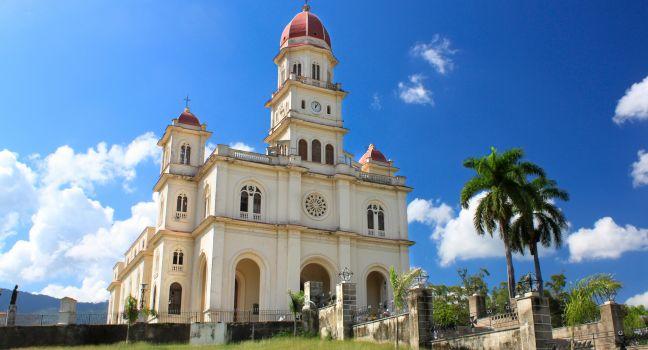Basilica del Cobre

After a drive through the countryside west of Santiago you'll see the red-tile tower of La Basilica de Nuestra Señora de la Caridad del Cobre—dedicated to Cuba's patron saint in 1926—before the turn-off to the copper mining town of El Cobre in which it is located. The story of the Virgin dates from the early 1600s, when three men in a boat first saw her floating on water during a storm; tradition holds that the Virgin saved the men from certain drowning. Records show that the statue was most likely brought from Spain on order of the then-governor of Cuba, but don't play iconoclast with the millions of faithful who take seriously the Virgin's reputed miraculous powers. (Her image has also been blended with that of Ochún, the orisha, or goddess, of love in the Santería religion.) Each September, pilgrims journey here—sometimes crawling uphill on their knees—on the Virgin's feast day (September 8) to pay homage to the image housed in a glass case high above the main altar. Her shrine is filled with gifts from the faithful, including Ernest Hemingway's 1954 Nobel Prize, which he won largely for his novel The Old Man and the Sea. The Nobel medal was stolen in 1986 but recovered. It is no longer on display, except during special occasions. A staircase at the back of the cathedral leads to the chapel containing the Virgin's wooden image. In front of the cathedral you'll find a plaque commemorating Pope John Paul II's visit here during his 1998 trip to Cuba. A taxi is the quickest way to get out here. Plan to pay CUC$30. Most area tours feature the basilica as a stop, too.



